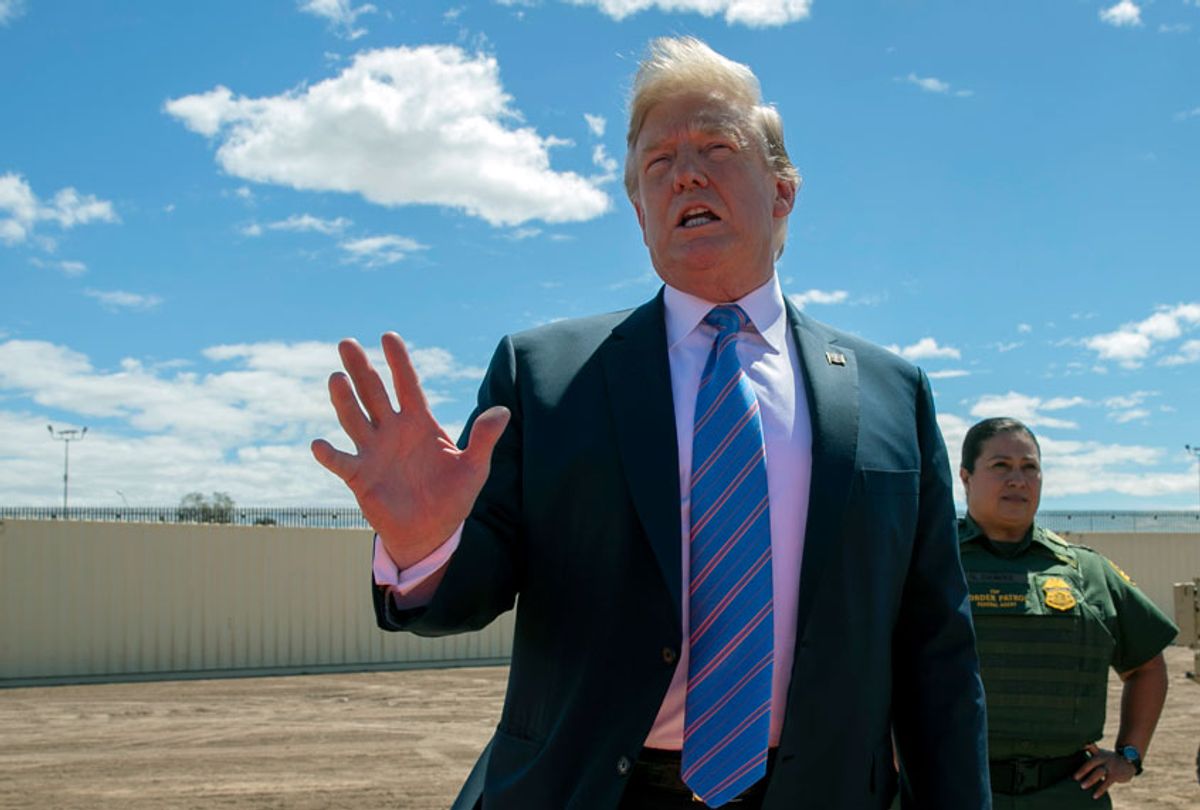In 2016 candidate Donald Trump kept his message simple. He was pro-economic growth but wanted immigration severely restricted. Late this week, as president, Trump declared he is "strongly considering" excluding illegal immigrants from all but sanctuary cities.
He was a world-class successful businessman who was going to put that acumen to work for the American people. After all, he knew the “best people”.
For years, U.S. corporations had been keeping hundreds of billions of dollars off-shore to avoid American taxation with some estimates that this cash stash approached $2 trillion dollars. There were some pretty perverse consequences from hoarding those stranded off-shore profits, as America’s decaying infrastructure was starved for capital investment and the nominally American multinationals chose to put their money to work somewhere else.
Trump’s suggested during the campaign the way to repatriate all that money was to cut the corporate tax rate and watch the hundreds of billions come pouring back. And with that flood of money he was going to dramatically grow the economy, or so the story went.
In a debate in Nevada he predicted he was going to take the rate of growth of the domestic product from an anemic one percent up to a robust four percent. “And I actually think we can go higher than four percent. I think you can go to five percent or six percent,” Trump proclaimed.
It wasn’t long after Trump, and the GOP pushed through their $1.5 trillion tax cut, that was heavily skewed to the one percent, that corporations like Harley Davidson, Inc. and General Motors Company laid off workers, took their profits and ran.
And while in the spring of last year the U.S. did experience a 4.2 percent pop in the gross domestic product, by October through December it was back down to a more typical 2.6 percent GDP expansion.
For all of 2018 the economy grew by 2.9 percent. Evidently, the slowdown in GDP growth left Trump looking for the Federal Reserve to help do with lower rates what he hadn’t been able to do with policy or new ideas. In fact, he insists that the economy’s “only problem” is the non-accommodating Federal Reserve.
But there’s actually a lot more on the horizon in the way of economic challenges in a country where the birth rate is dropping to its lowest point in decades. That in turn can’t help but put increasing pressure on Social Security, and Medicare as the entire population ages.
In Germany, faced with similar demographic challenges, policy makers embraced immigrants and even invested in them as a down payment on the stability of entitlements.
What’s kind of crazy is that in the Dark Age of Trump we have to relearn what we already knew — America’s secret sauce that has the potential to foster broad-based prosperity has always been immigration.
Creation of new ideas that can improve the quality of our lives rarely are generated by the kind of closed system Trump wants America to be. Ironically, Trump’s worldview is rooted in scarcity, that there’s not enough to go around. It’s rooted in fear and death.
What I witnessed as a reporter for decades in New York City is that the immigrants that came here were rooted in faith, family and work.
In New York City it has been the steady waves of both undocumented and documented immigrants that were central to the city’s recovery since the 1970s fiscal crisis.
David Dysseygaard Kallick, a senior fellow with the Fiscal Policy Institute, writes about the centrality of immigrants to New York City’s success in a chapter in a book entitled “One Out of Three: Immigrant New York In The 21st Century” edited by Nancy Foner. “The increase in the number and proportion of immigrants in the city has fueled economic growth, filled in neighborhoods that had become underpopulated later during the 1970s, and helped make New York the extraordinarily diverse global city it is today, with immigrants working in a wide range of jobs from the top to the bottom of the economic ladder.”
In 1970 there were 6.25 million U.S. born residents in New York City and 1.5 foreign born. By 2009 the number of U.S. born had dropped to 5.25 million but with over 3 million immigrants calling the Big Apple home.
“There were immigrants at the top, bottom, and middle of this economic ladder, with immigrants generally living in families that were clustered in the middle,” according to Kallick. "In 2005, 55 percent of New Yorkers living in immigrant families (those with at least one foreign-born adult) had an annual family income of $20,000 to $80,000."
Trump’s anti-immigrant base maintains that new arrivals take jobs from Americans. But my direct experience in the crucible of New York City is that it is far more likely they create jobs for Americans.
“Immigrants also have been among the entrepreneurs who found ways to meet new consumer demands,” writes Kallick. “Between 1994 and 2004, the number of businesses in the city overall increased by 10 percent, while the number of businesses in neighborhoods with particularly high concentrations of immigrants grew far faster: Flushing [in Queens] had 55 percent more businesses at the end of that ten-year period than at the beginning; Sunset Park had 48 percent more; Sheepshead Bay-Brighton Beach [all in Brooklyn] had 34 percent more; and so on down the list."
Something happened in all these neighborhoods — an historic decline in crime because the people that were living there were vested in their neighborhoods.
The number of New York City homicides dropped from 2,154 in 1990 to 289 in 2018. Now, the battle becomes holding on to the neighborhoods they revitalized.
Life overcame death and the local economy expanded because people were getting a chance to actualize the American Dream building with the intent that tomorrow would be a better day and that we collectively have the power to make it so.



Shares